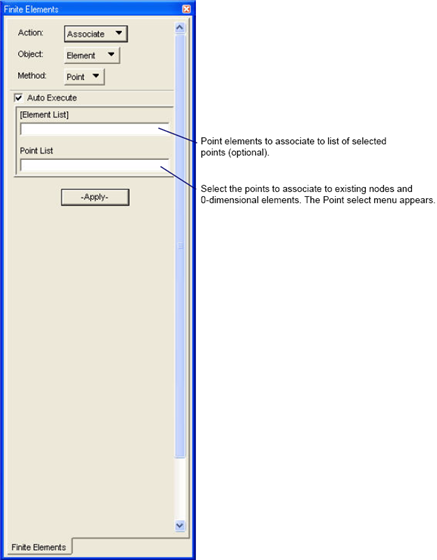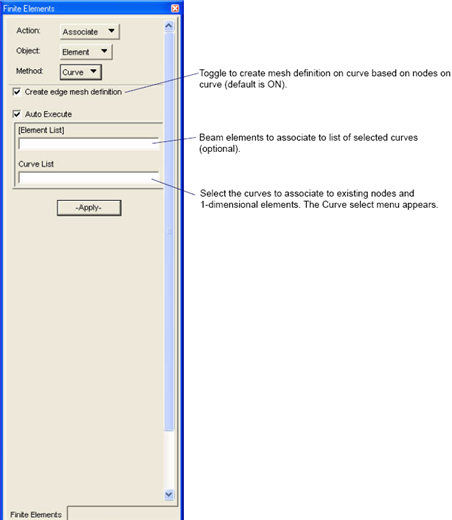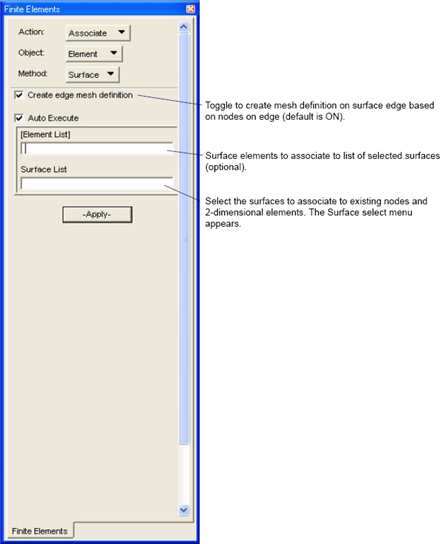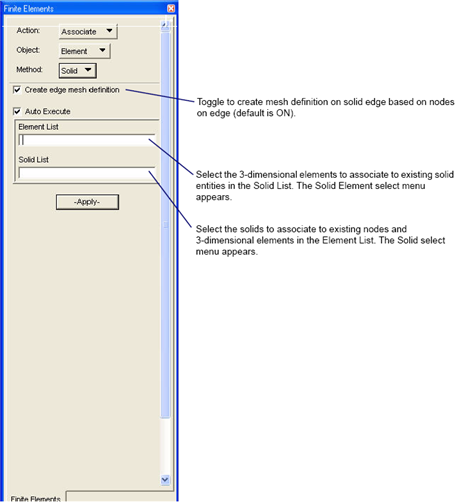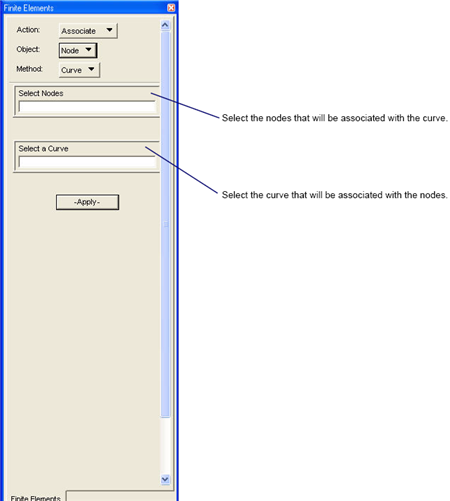XXXXXXXXXXXXXXXXXXXXXXXXXXXXXXXXXXXXXXXXXXXXXXXXXXXXXXXXXXXXXXXXXXXXXXXXXXXXXXXXXXXXXXXXXXXXXXXXXXXXXXXXXXXXXXXXXXXXXXXXXXXXXXXXXXXXXXXXXXXXXXXXXXXXXXXX''"> Associate Forms
The following options are available when Associate is the selected Action and Element is the selected Object.
Method | Description |
| The Point method allows the association of nodes and 0-dimensional finite elements to geometric point entities. |
| The Curve method allows the association of nodes and 1-dimensional finite elements to topological vertices and edges and geometric curves respectively. |
| The Surface method allows the association of nodes and 2-dimensional finite elements to topological vertices, edges, and faces and geometric surfaces respectively. |
| The Solid method allows the association of nodes and 3-dimensional finite elements to topological vertices, edges, faces, and bodies and geometric solids respectively. |
The Point Method
The Point method allows the association of nodes and 0-dimensional finite elements to geometric point entities. The associate action allows users to associate finite element entities to geometries, if they are unassociated, thereby enabling the user to apply loads, boundary conditions and properties directly to the geometry instead of to the individual finite element entities.
The Curve Method
The Curve method allows the association of nodes and 1-dimensional finite elements to geometric curve entities. The associate action allows users to associate finite element entities to geometries, if they are unassociated, thereby enabling the user to apply loads, boundary conditions and properties directly to the geometry instead of to the individual finite element entities.
The Surface Method
The Surface method allows the association of nodes and 2-dimensional finite elements to geometric surface entities. The associate action allows users to associate finite element entities to geometries, if they are unassociated, thereby enabling the user to apply loads, boundary conditions and properties directly to the geometry instead of to the individual finite element entities.
The Solid Method
The Solid method allows the association of nodes and 3-dimensional finite elements to geometric solid entities. The associate action allows users to associate finite element entities to geometries, if they are unassociated, thereby enabling the user to apply loads, boundary conditions and properties directly to the geometry instead of to the individual finite element entities.
The Node Forms
This form is used to associate nodes and curves.
